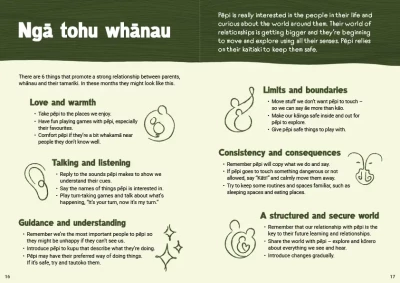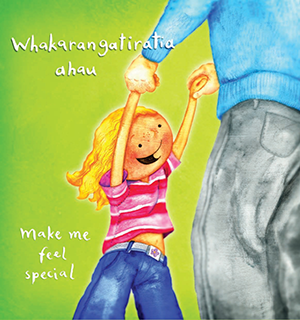
In my mind's eye
Babies start to understand that people and things will reappear after they have gone from sight. Before they develop this understanding, they can get upset when they can't see someone.
By this stage, most babies will understand that people and things still exist even when they can’t see them. This is called ‘object and person permanence’ and is linked with their developing memory skills.
Where it used to be a case of ‘out of sight, out of mind’, they’re now able to create an internal image – a picture of the person or thing that’s currently out of their sight.
Person permanence develops before object permanence and is closely linked to the relationship with their primary caregiver.
Separation anxiety
In Whakatipu Te Pihinga 2, under ‘Guidance and understanding’ on page 16, it says:
‘Remember we're the most important people to pēpi so they might be unhappy of they can't see us.’
This is a sign that the baby has developed people permanence but doesn’t yet understand that the person will come back – and may react by getting upset. This is called ‘separation anxiety’ and is common at this stage.
It can frustrate parents though, so helping them to understand that this is a sign of baby’s secure attachment to them might make them feel better about it.
Ask whānau:
- What have you noticed your baby doing when they can’t see you?
- If baby protests when you’re not in view, what do you do?
- How could you help baby learn that you haven’t disappeared for good?
It can ease baby’s distress if parents keep talking so they can at least hear the parent, even if they can’t see them.
Telling baby that they’re coming back will help baby to learn that they haven’t gone forever.
Games like peek-a-boo are perfect for showing baby that a person can disappear and then suddenly reappear.
Object permanence continues to develop over the first year. Parents will see baby looking for things that have disappeared or that have been hidden from them. This could result in some enjoyable games of hiding and finding.
- What things does baby want that you aren’t happy about them having?
- How do you manage this?
- What do you do?













